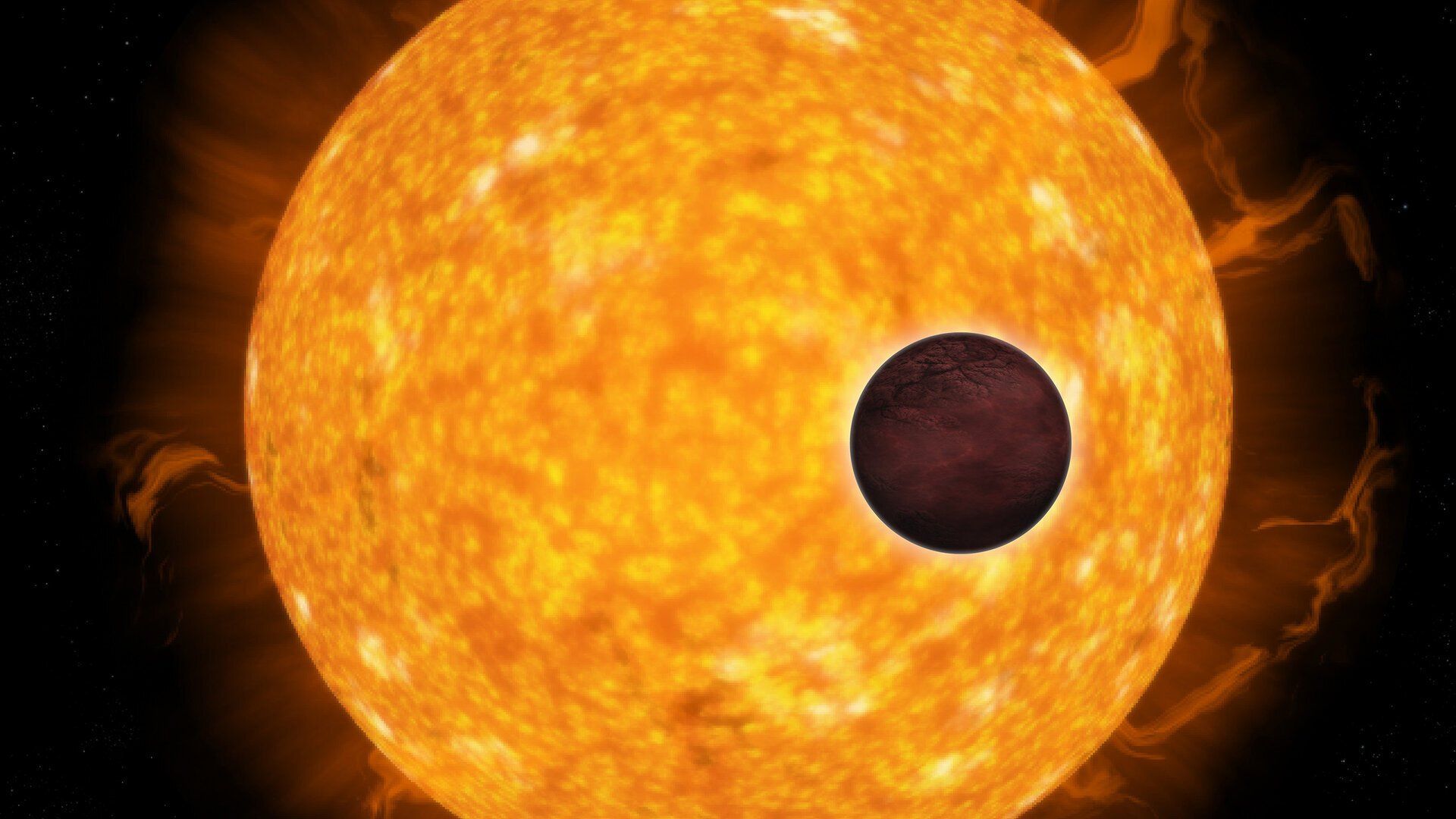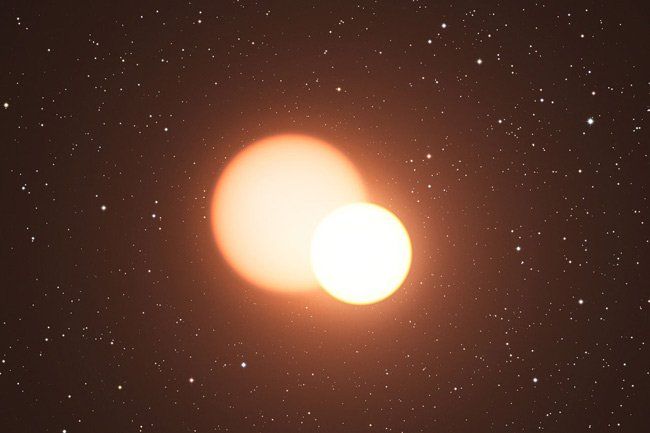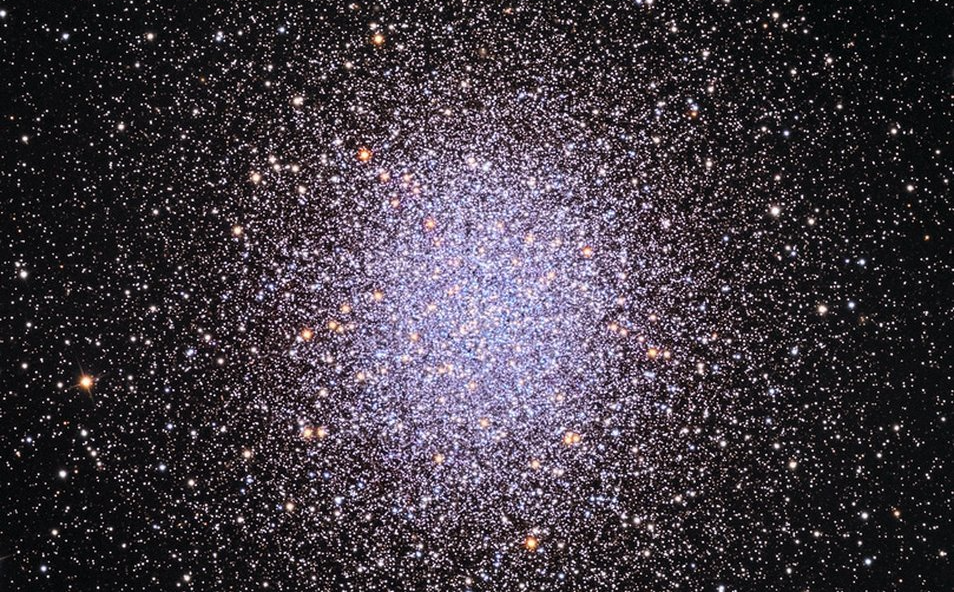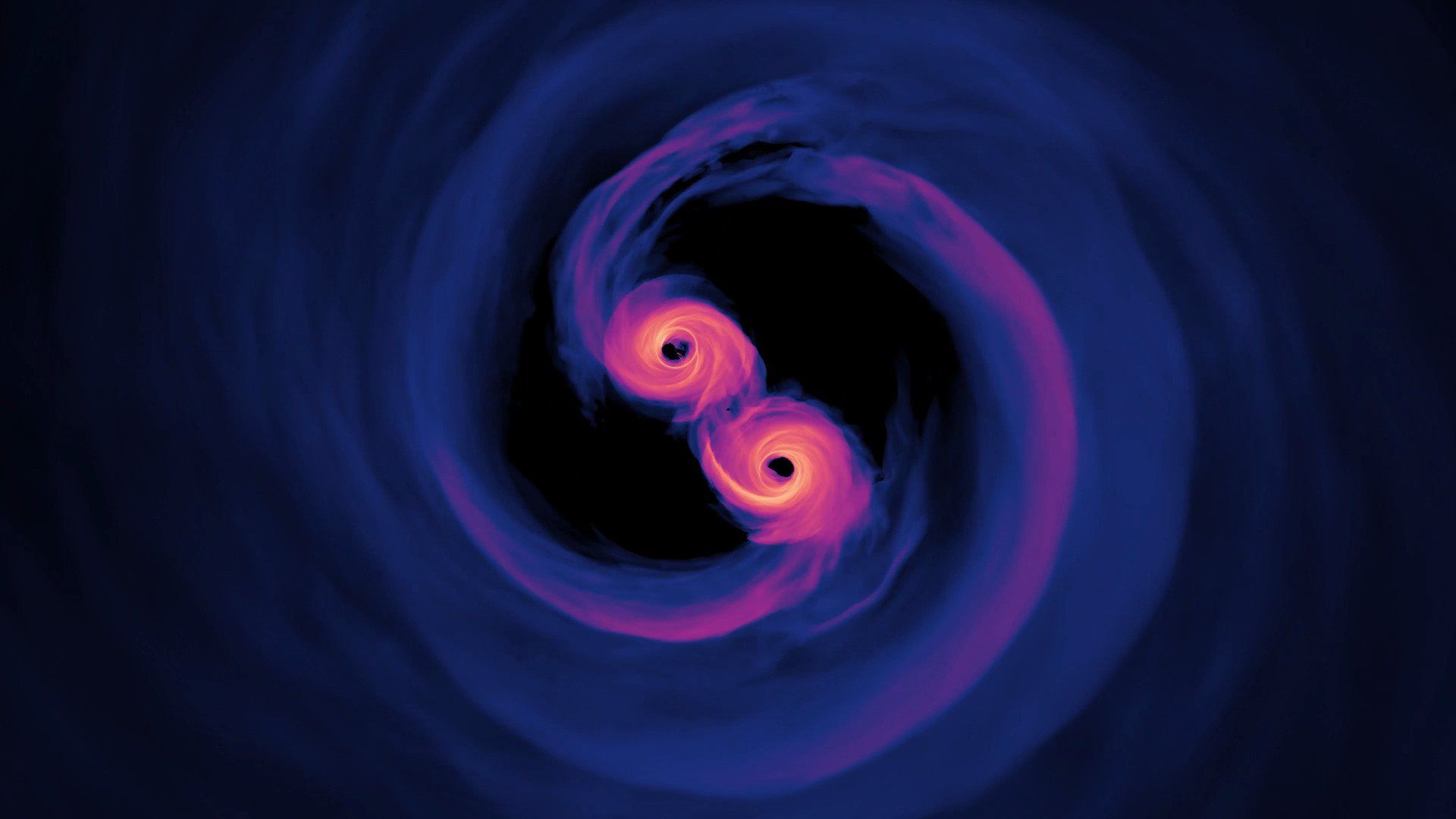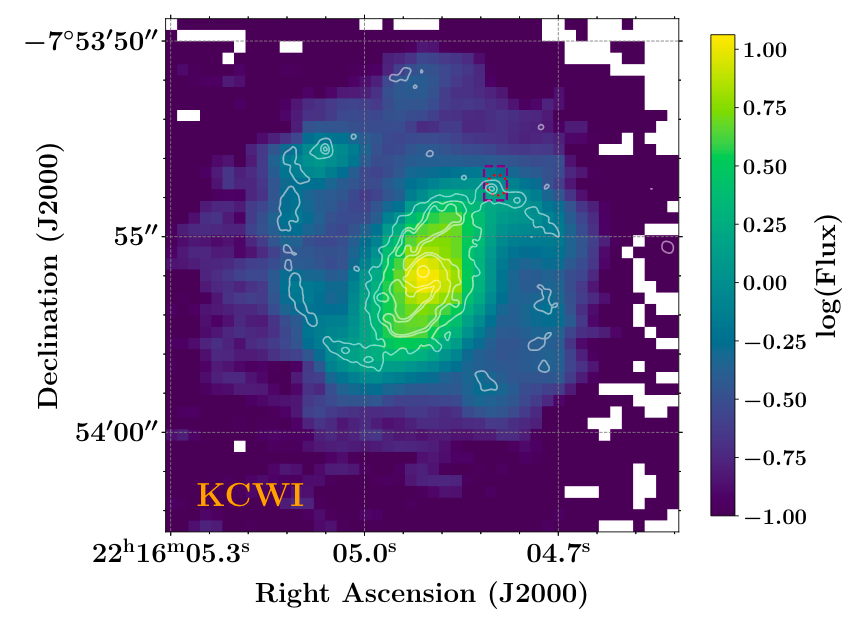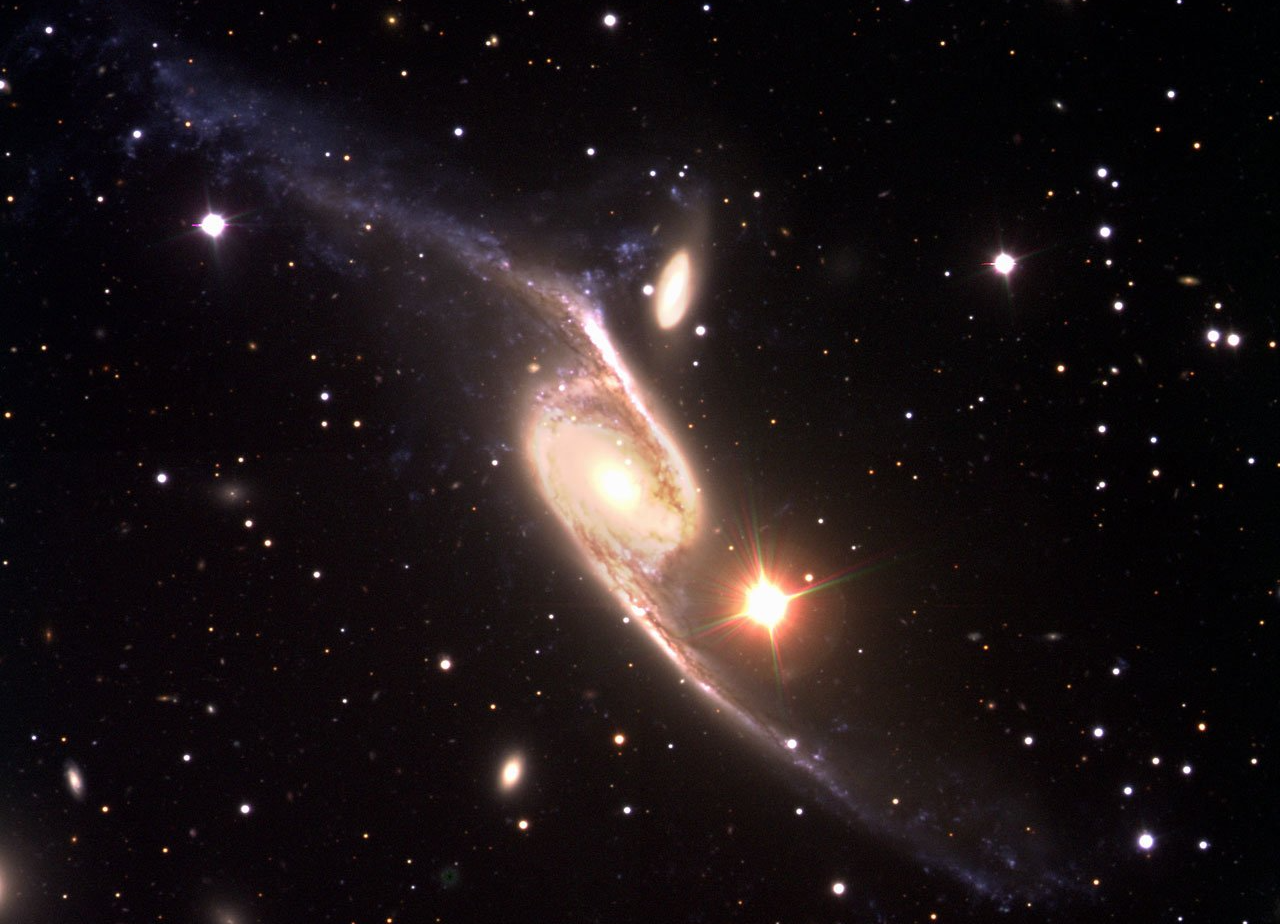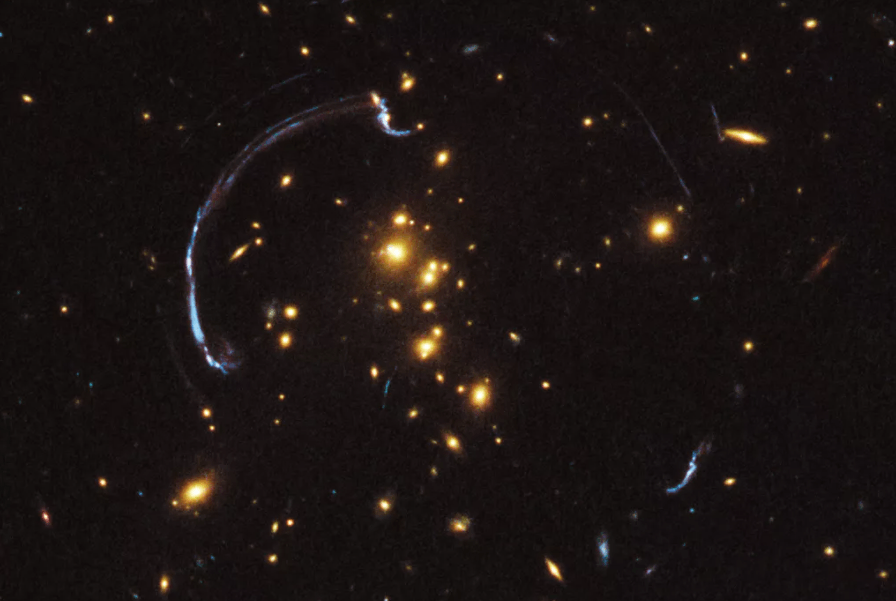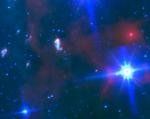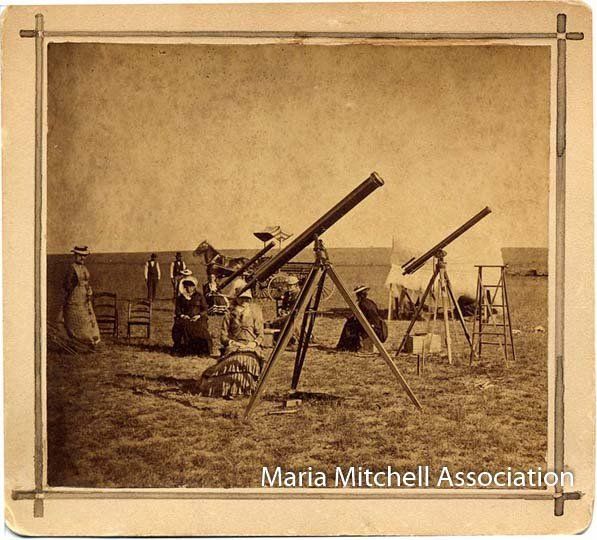RESEARCH – ASTRONOMY
NSF-REU Research Topics
For more than 60 years the Maria Mitchell Association (MMA) has welcomed students to Nantucket to conduct summer research projects in astronomy and astrophysics. Every year, six undergraduate students undertake research internships at the MMA through the Research Experience for Undergraduates (REU) program, which is generously funded by the National Science Foundation (NSF).
Students work on individual projects guided by the MMA's Director of Astronomy and experienced affiliated astronomers and present their results at the following winter meeting of the American Astronomical Society (AAS). Past projects have included studies in visible, ultraviolet, infrared, radio, X-ray, and gamma-ray wavelengths, and have used data from advanced, ground-based observatories including the Keck telescopes in Hawai'i, the Very Large Telescope (VLT), and the Atacama Large Millimeter Array (ALMA) in Chile, as well as space-based observatories such as the Hubble Space Telescope, the Chandra X-ray Observatory, and the Transiting Exoplanet Survey Satellite (TESS), to name only a few. In addition, regardless of their individual topic, all students have the opportunity to develop their observational skills and collect data using the onsite 24-inch and 17-inch research telescopes of the MMA and have access to the observatory's extensive historical glass plate collection.
The available projects vary each year, but often fall into some of the following categories:
Exoplanets and Their Host Stars
Exoplanets are planets that orbit stars other than our Sun. The most successful way of detecting these planets is through the transit method, which is possible when an exoplanet passes in front of its star and periodically blocks some of its light, making the star briefly appear slightly dimmer. In order to learn more about what types of exoplanets form and which might be habitable, it is also important to study their host stars, whose features such as stellar type and magnetic activity affect planet evolution and habitability.
Artist's impression of a rocky planet transiting its star.
Image credit: ESA
Image source:
https://www.esa.int/ESA_Multimedia/Images/2019/02/Transiting_exoplanet
Variable Stars
There are many types of variable stars, which are stars whose brightness is not constant, but rather changes over time. These could be extrinsic variables such as binary stars or intrinsic variables such as pulsating stars, but either way, studying the variability of these stars provides an opportunity to learn about stellar processes, including activity cycles and magnetic pole reversals, among many others. The MMA has a long history of contributions to the study of variable stars, dating back to the earliest photographic plates taken at the MMA in the early 1900s
Artist's impression of an eclipsing binary star.
Image credit: ESO/L. Calçada
Image source:
https://www.space.com/15396-variable-stars.htm
Star Formation and Star Clusters
Stars form when molecular gas clouds become dense enough under gravitational collapse to start nuclear fusion. In this process, protostars form circumstellar disks, which then can give way to planetary systems, so studying star formation is also critical to studying planet formation. Sometimes huge groups of stars are born at the same time out of the same cloud of gas and these enormous clusters can help track cosmological ages and distances, as well as mark potential galaxy interactions.
Supernova Remnants
Supernovae are some of the most powerful explosions in the Universe and they play an important role in galaxy evolution and chemical enrichment. Studying supernova remnants in multiple wavelengths, especially in x-rays, gives some clues as to their composition, progenitor conditions, and the effects of shocks on surrounding material.
False color image of supernova remnant in x-ray and optical wavelengths.
Image credit: NASA/CXC/MIT/SAO/STScI
Image source:
https://chandra.harvard.edu/photo/2009/e0102/
Black Holes and Quasars
Black holes are arguably some of the most mysterious and intriguing astrophysical objects in existence. What masses of black holes exist and where are they found? How do intermediate mass black holes and supermassive black holes form? What roles do black holes play in galaxy evolution? How do accretion disks and quasars form and what powers their emission? Trying to answer some of these questions not only gives us a better understanding of black holes themselves, but also of a range of astrophysical processes. Distant quasars can also be used as tools to investigate intervening material including galaxies and the cosmic web.
Simulation of binary black holes.
Image credit: NASA's Goddard Space Flight Center
Image source:
https://svs.gsfc.nasa.gov/13086
Fast Radio Bursts (FRBs) and Their Host Galaxies
Fast radio bursts are short, bright flashes of light in radio wavelengths that come from distant galaxies, but whose progenitors are uncertain. Regardless of what causes them, the way the light from these FRBs gets spread out as it travels to Earth can tell us how much material it encountered along the way and help us study the cosmic web. Observing the host galaxies of FRBs in multiple wavelengths is also an important step towards better understanding the environments that produce FRBs and further refining measurements of the properties of galaxies and the intergalactic medium (IGM).
Data from the Keck and Hubble telescopes showing the host galaxy of FRB190608
Image credit: F4/J. Chittidi
Image source:
https://arxiv.org/pdf/2005.13158.pdf
Galaxy Formation and Evolution
Galaxies are complex structures that come in many different forms. In order to better understand how galaxies form and evolve, we study how their gas moves, what chemical processes are taking place and in what regions, and what makes up their halos. Models and multiwavelength observations are both essential parts of these types of studies. One important technique is quasar absorption line spectroscopy, which enables the study of intervening gas contained in galaxies and other structures that are too dim or distant to be observed directly in emission.
Dark Matter
The ever-mysterious dark matter that makes up about 27% of our Universe plays a huge role in creating the structures throughout the Universe. Involved in everything from forming individual galaxy halos, to binding galaxy clusters together, to spinning filaments of the cosmic web, dark matter is everywhere, but very difficult to measure. One way of doing so is through gravitational lensing, where the huge mass of dark matter in a galaxy cluster causes light to bend around it, allowing one to weigh the mass of dark matter via the lensing signature.
Gravitational lensing.]
Image credit: NASA/ESA
Image source:
https://www.space.com/14481-hubble-photo-brightest-galaxy-gravitational-lens.html
Astrophysical Masers and Lasers
For over 20 years, students and researchers at the Maria Mitchell Association have been observing and monitoring a unique star called MWC349. This object has both laser and maser emission, is variable, and is bright in radio and optical wavelengths. The MMA is the only institution to have such a continuous, long-term collection of observations of MWC349, which can be used to track changes over time and learn more about this curious star.
MWC349 is the bright star on the right.
Image credit: V. Strelnitski, et al. 2013
Image source: https://www.cfa.harvard.edu/news/su201744
https://iopscience.iop.org/article/10.1088/0004-637X/777/2/89/pdf
Software Development
The MMA supports all opportunities for creative software development and design - for example, the design of an app-based, database system to efficiently link back-up, ‘non-ideal weather condition’ observing programs developed by amateur and student researchers with professional astronomers who have time on large telescopes, in order to more efficiently schedule the on-sky use of the world’s premier, professional telescopes.
Connect astronomers around the world.
Image credit: Peter Rand
Image source:
https://rootedinrights.org/why-arent-more-disabled-people-online/shutterstock_527035084/
History and Culture of Astronomy
In addition to supporting rigorous research in astronomy, the Maria Mitchell Observatory offers a unique opportunity to explore the history and culture of astronomy. The MMA's long history and preservation means there are plenty of historic resources to explore and intriguing stories to investigate. For example, projects have included working with the historic glass plate collection, and tracking Maria Mitchell's comet to estimate when modern telescopes could potentially observe it again.
Observing the solar eclipse in Denver, Colorado, 1878
Image credit: Maria Mitchell Association


